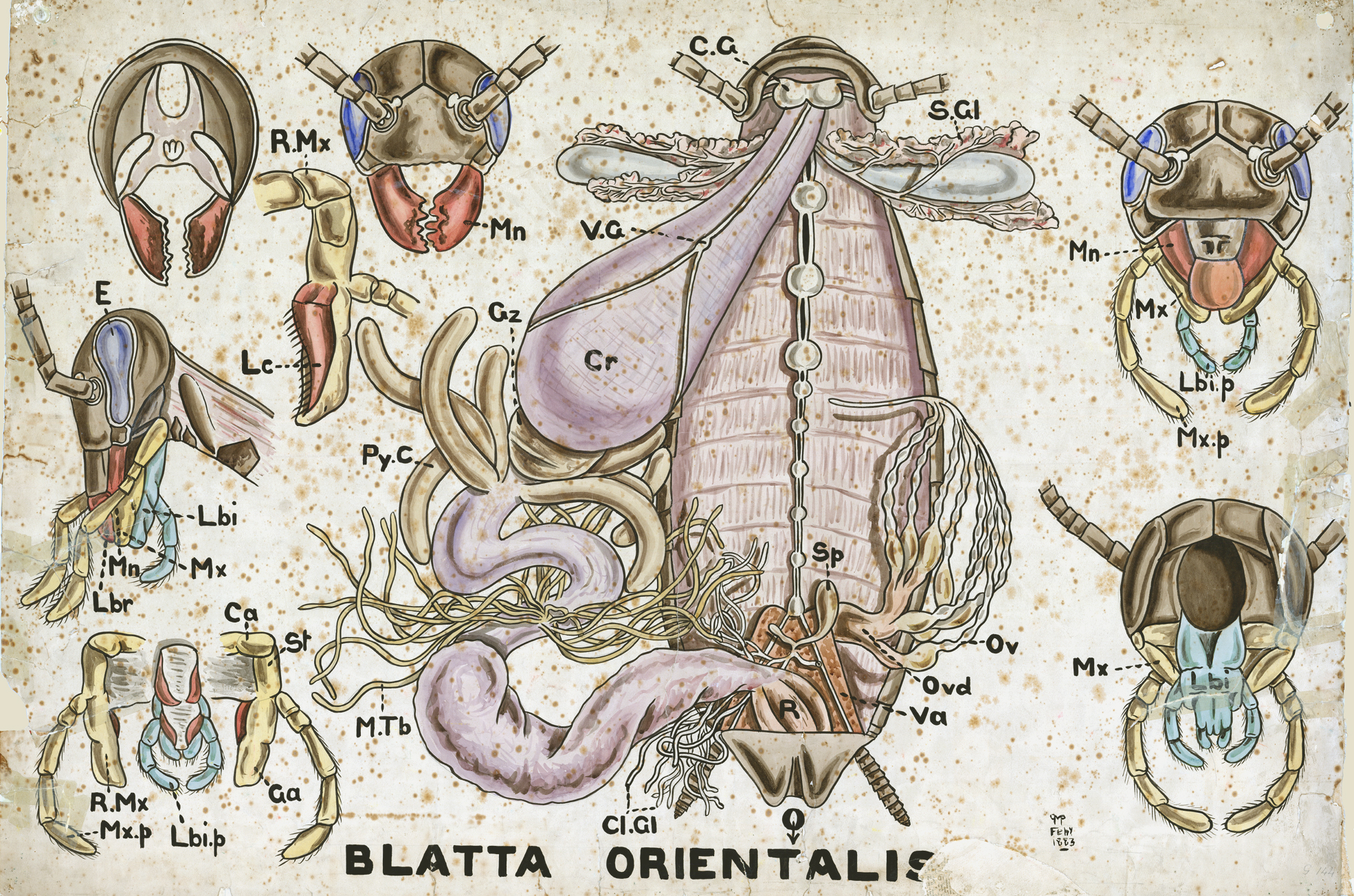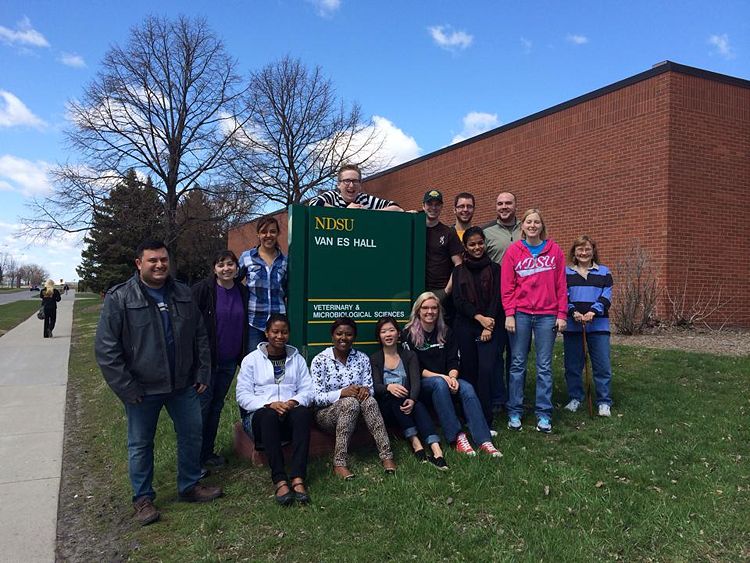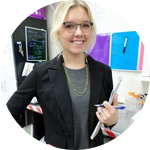About This Project
Tularemia is a deadly disease caused by the bacterium Francisella tularensis (Ft). This bacterium is also a potential biological weapon. In order to develop cures, we need to know more about how Ft avoids the host immune system. For my senior thesis, I will use cockroaches (which have a strong immune system) to test my hypothesis about why certain chaperone proteins are required for disease. This may lead to better treatments in the future.Ask the Scientists
Join The DiscussionWhat is the context of this research?
The ClpB and ClpX chaperone proteins are required for F. tularensis (Ft) to cause disease. These chaperones control turnover of proteins in the cell and help Ft adapt to stressful conditions that could destabilize proteins by causing them to fold incorrectly. Studies have demonstrated that without ClpB, Ft is sensitive to extreme heat. But, we don’t think that this observation fully explains why it is required for disease. The mutant also establishes an initial infection in mice but is unable to persist and multiply at later time points. These findings indicate to us that there is a specific pathway, required for late-stage infection that is inoperable or impaired in the clpB mutant. Identifying this important pathway could lead to new treatments for tularemia.
What is the significance of this project?
In addition to their role in protecting from heat stress, chaperones are vitally important to mutation tolerance in bacteria. This is especially true for intracellular pathogens that accumulate high rates of damaging mutations due to the combined effects of genetic drift and repeated population bottlenecks during transmission. Chaperones can protect other proteins from these damaging mutations. I hypothesize that this is how ClpB helps Ft cause disease. I think ClpB stabilizes another protein that can't fold properly by itself and that without this other protein, Ft can't cause disease. ClpX may be playing a similar role. If my hypothesis is correct, future treatments for tularemia may target the ClpB- and ClpX-dependent proteins that my project will identify.
What are the goals of the project?
I will test my hypothesis by comparing gene expression patterns in normal Ft, the ClpB mutant, and the ClpX mutant at early and late time points during infection. I predict that I will see a lot of differences. But, I am specifically looking for a couple things.
First, pathways (sets of related genes) that are activated only in normal Ft, but not in one of the mutants, may indicate that an important regulator is stabilized by ClpB or ClpX.
Second, pathways activated to a higher level in the mutants may indicate that another pathway with similar biological function isn't working properly, because an important component needs ClpB or ClpX.
I will then use Bioinformatic analysis of the mutation patterns of these pathways to identify which components are likely to be stabilized by ClpB and ClpX.
Budget
The first $1,000 of the budget will go toward the cost of my travel to the 2015 ASM Biodefense and Emerging Disease Research Meeting. I submitted an abstract describing my work on the tropical roach assay and how we are using it to understand Francisella pathogenesis. The meeting organizers selected it as a highlighted oral presentation! The actual cost of travel will likely exceed $1,000 so any amount you contribute beyond our requested budget will be applied to this trip.
The rest of the budget will be used for my senior project. In order to meet the experimental goals that I’ve set for myself, I will need to collect samples from infected roaches at different time points. I will use 3 biological replicates, 3 time points, and 3 strains for a total of 27 experimental groups. After appropriate quality control checks, we will collaborate with a genome center to do the actual sequencing. I will then examine differences in transcript numbers that correlate with the experimental conditions.
Meet the Team
Affiliates
Team Bio
Bridget Eklund is currently in her junior year at North Dakota State University and is majoring in Microbiology. She plans to continue her education onto graduate school to earn a PhD in infectious disease. She is interested in a career in microbiology because the unknown complexes hidden within microscopic organisms fascinates her.When she is not taking care of her roaches, Bridget enjoys early morning runs followed by a strong cup of coffee. She grew up in the small town of Scandia, Minnesota and often explores the woods of Northern Minnesota via foot, canoe, or dirt bike.
Bridget Eklund
Undergraduate Student at North Dakota State University
Press and Media
This is the session I’ll be speaking in at the ASM Biodefense and Emerging Disease Research Meeting:http://www.abstractsonline.com/Plan/ViewSession.as...
Here are a couple news stories about some previous work I did with the tropical roach assay. Others in the lab are continuing to work with opportunistic pathogens, but I am focusing on Francisella for my senior project.
http://www.wday.com/content/ndsu-student-using-coc...
http://ndsuspectrum.com/bridget-eklund-works-with-...
Here is a link to a more detailed scientific study on the validity of using cockroaches in this way.
http://www.ncbi.nlm.nih.gov/pmc/articles/PMC343127...
Additional Information
Perks for Pledges:We sincerely thank all of our supporters. If you aren’t able to pledge, please spread the word about our project by posting to your commonly used social media platforms. If you are able to pledge, we offer the perks below. Each additional level of support includes all the perks from the previous levels.
Pledge 1 Dollar
We will publicly acknowledge your personal contribution on our website.
Pledge 5 Dollars
I will publicly acknowledge your contribution during my presentation at the ASM Biodefense and Emerging Diseases Research Meeting.
Pledge 10 Dollars
Pick a sticker! Design options are posted below.
Pledge 25 Dollars
You can name one of our adult breeding roaches and I will send you a picture of your roach via email.
Pledge 35 Dollars
Our lab will donate two Madagascar Hissing Cockroaches to an elementary, middle, or high school science classroom in North Dakota or Minnesota. We will also include housing instructions and suggested educational activities using the roaches. (If you are an educator in North Dakota or Minnesota within driving distance of Fargo and would like to receive donated roaches, please contact us).
Pledge 50 Dollars
Our lab will donate two Madagascar Hissing Cockroaches PLUS all required housing materials to an elementary, middle, or high school science classroom. (Again, please contact us if you’re an educator that would like to receive this perk).
Pledge 100 Dollars
Bridget and Dr. Fisher will visit with an elementary, middle, or high school science classroom to discuss the project and their experiences as scientists. This visit can be in-person for classrooms within driving distance of Fargo or virtual for classrooms located elsewhere. Classrooms can raise funds themselves for this activity or other donors can suggest a particular classroom or donate the visit to an interested classroom.
Pledge 200 Dollars
In addition to all of the perks above, we will give you a tour of our lab facility in Fargo, ND. This is a great opportunity for classrooms or groups and can be done in person for local donors or virtually for others.
No matter which level of support is right for you, we sincerely appreciate it.
Sticker Options - all stickers are 3" x 4" glossy finish
1. MediRoach

2. CT scan

3. Anatomy of a Roach-1883

More from the lab:

Dr. Fisher--adviser to the [future] stars
https://experiment.com/users/nathanfisher79
You can learn more about the lab and our department here:
www.breakinggenes.com
www.ndsu.edu/vetandmicro

This is typically the size of roach we use for most experiments.

A typical experimental group.

Members of the Fisher lab after a Cystic Fibrosis Foundation fundraiser this summer.

Members of the Fisher lab outside our research building.
*Project header image was taken by John Shortland and made available via Flickr. www.johnshortlandwriter.com
Project Backers
- 44Backers
- 100%Funded
- $3,500Total Donations
- $62.50Average Donation

